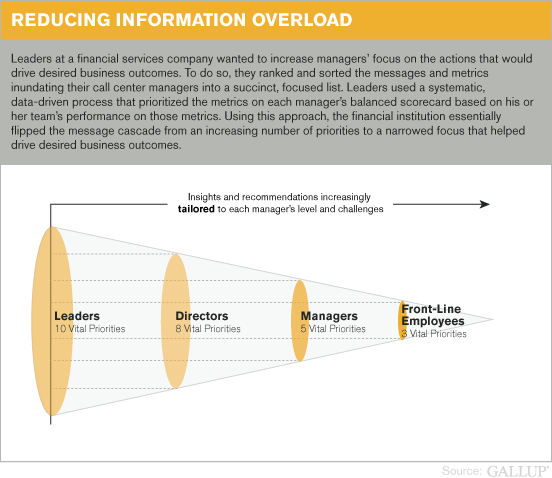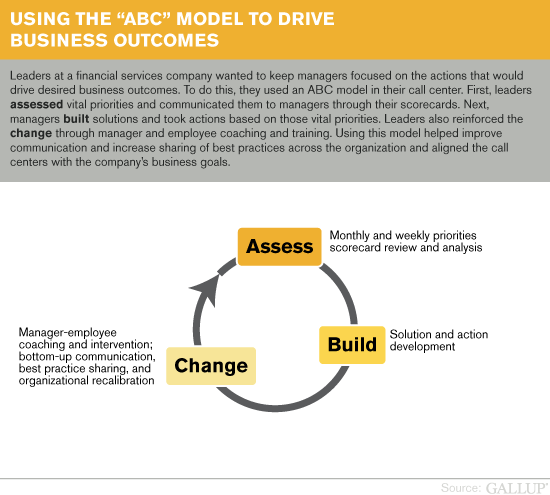In 1849, French journalist Jean-Baptise Alphonse Karr wrote what was to become a famous epigram: "Plus ça change, plus c'est la même chose." Or "The more things change, the more they stay the same."
More than 70% of change initiatives fail.
Though Karr penned this with a satirical edge, his quotation holds true in today's corporations. "Change managers" or "change agents" are common roles, and many companies have departments dedicated to leading change initiatives. These initiatives take on a variety of forms, involve different stakeholders, and are packaged in myriad ways. But the outcome is almost always the same: The more things change, the more they stay the same -- because more than 70% of change initiatives fail.
As companies fight for business growth, many implement change initiatives to create a strong and differentiated customer experience. But if they want to succeed in improving that experience, they must address the primary reasons that change initiatives fail:
- They don't focus enough on front-line managers.
- They don't focus front-line managers on the exact actions they need to take to achieve the company's desired business outcomes.
According to Gallup research, finding the right focus is key to creating fully engaged customers, who deliver a 23% premium over average customers in share of wallet, profitability, revenue, and relationship growth.
A failure to focus
The problem is that in too many companies, front-line employees receive dozens of high-priority messages -- some complementary, some competing -- from executives, managers, and change leaders each day. These conflicting messages make it difficult for workers to know what tasks or metrics they should focus on during a given day to deliver a fully engaging customer experience.
A global financial services company faced this challenge when it began an initiative to improve the customer experience that its call centers provide. The graphic below shows how messages about the company's priorities cascaded from leaders to directors to managers, picking up additional items at each step along the way. When messages finally reached front-line employees, those workers had to decipher which of 40 or more messages required their focus that day. These messages included various operational, financial, customer experience, and human capital metrics.

This lack of clear focus and direction is one of the fundamental reasons why change initiatives fail. Change management principles and frameworks help leaders plan and launch a change initiative, a key first step in the process. But leaders often fail to ensure the initiative's success by neglecting to focus the messages at the most critical level -- managers -- and to ensure that those messages address managers' needs.
Managers are vital to deploying a customer experience change initiative because they are responsible for the employees who deliver that new experience to the customer. They do this by:
- interacting with senior leaders and change leaders
- focusing front-line employees on specific actions
- holding front-line employees accountable for delivering on those actions
- reporting to senior leaders and change leaders on barriers to success
- developing ways to overcome or work around barriers
The global financial services company in this example beat the odds. By following four crucial steps, it redefined and improved its call center customer experience while cutting costs -- and focusing on managers was key to the initiative's success.
Step 1: Gather and evaluate all metrics
At the start of the initiative, leaders examined all call center metrics to ensure that each had a direct and quantifiable impact on the desired business outcomes. These outcomes were:
- Measurably improve the company's customer experience metrics.
- Reduce costs by improving first-call resolution and average talk time.
Taking a bottom-up approach, the company's leaders spoke to managers and front-line employees to develop a comprehensive list of metrics. They identified three types of metrics:
- Metrics on the balanced scorecard: These metrics were part of the company's compensation and accountability system and of its performance scorecard. They included customer experience metrics, legal compliance, percentage of calls on hold, transfer percentage, resolution rate, and average handle time.
- Metrics not on the balanced scorecard: These metrics were developed over the years as an additional management mechanism and adopted informally across the company. They covered items such as training hours, percentage of time spent coaching, qualitative call review scores, and seniority.
- Manager-specific metrics: Individual managers developed these informal metrics to manage team- and employee-specific needs. Examples included time spent supporting new hires or training peers, number of team-building sessions, time employees spent away from their desk, and ad-hoc projects deemed important by the manager.
Each of these metrics served a purpose, but there was a clear divide between the ones that supported leadership's desired business outcomes and the ones that worked against them. So every metric was reviewed and evaluated using these three questions:
- Can we quantitatively prove that this metric affects the customer experience or costs and if so, to what degree?
- Does this metric apply consistently across all teams and employees?
- Does this metric compete or overlap with another metric?
Step 2: Prioritize and target the metrics at each level and for each role
After developing a comprehensive list of the metrics and an understanding of them, leaders ranked and sorted them into succinct, focused lists. These lists were differentiated at each organizational level (leader, director, manager, and front-line employee) and for the different roles at each level. Instead of letting managers use their own filters and biases to determine which of the metrics they and their employees would focus on, leaders created a systematic, data-driven process that prioritized the metrics on each manager's balanced scorecard based on his or her team's performance on those metrics.
This weekly scorecard evolved over time and sometimes included or emphasized different metrics based on the team's performance or the company's business needs. The scorecard helped managers focus on the most vital priorities because it emphasized messages and metrics that immediately affected managers, their teams, and results they could actually improve. Using this approach, the company essentially reversed the message cascade from an increasing number of priorities to a narrowed focus that helped drive desired business outcomes.

Gallup expert Jay Freeman provides a formula for setting key metrics that any business can follow in his article "You Don't Know Where Your Company's Going." The more closely businesses follow it, the more successful Step 2 will be:
- Start by defining your primary metrics -- or the "vital few" -- and your subordinated metrics, which are tracked but not given the same focus.
- Focus on metrics that the work team can influence.
- Determine which primary metrics can serve as a proxy for other metrics.
- Note the relationships between your primary metrics when building a scorecard: Are they independent, reinforcing, or balancing metrics?
Step 3: Establish a systematic process to ensure that managers reinforce the change initiative
In Steps 1 and 2, the company made changes that were holistic, measurable, and targeted -- particularly at the manager level -- increasing the probability that the initiative would succeed and achieve the company's desired business outcomes. To implement and operationalize the change, the company used an "ABC" model -- Assess, Build, and Change. Each level of the company followed a standard process that included collecting and analyzing data, observing employee-customer interactions, developing action plans, coaching and training, and using leader feedback reports.

Though the managers' scorecards differed based on their teams' goals and performance, the fundamental pieces of the ABC model did not change. Focusing on these key factors helped ensure the change initiative's success:
- Performance: Each manager's and employee's actions and metrics were extremely focused and customized based on their performance.
- Measurement: The company measured success through performance observations and controllable customer experience and cost metrics.
- Accountability: In addition to using formal compensation and performance scorecard accountability systems, manager-over-manager change discussions, coaching, and agreed-upon action plans created a strong informal accountability system.
Step 4: Create a "test and learn" process to ensure that the change model drives the desired impact and to maximize broader rollout success
Though leaders were confident about the change plan, they tested it before implementing it system-wide to ensure that it measurably drove the desired outcomes with minimal organizational cost and disruption. They also wanted to determine best practices, identify barriers, and obtain greater buy-in at all levels.
They randomly selected nine test teams and nine control teams. The test teams implemented the change initiative over the course of nine weeks. Their progress was aggregated, reported, and compared to the control teams every three weeks to refine the plan as needed.
At the end of the testing period, the company learned that the test teams outperformed the control teams across all key metrics, particularly on the company's desired business outcomes:
- Measurably improve the company's customer experience metrics. Test teams outperformed control teams by more than 21%.
- Reduce costs by improving first-call resolution and average talk time. Test teams outperformed control teams in first-call resolution by 10% and outperformed control teams in average talk time by 5.7 seconds per call.
The nine test teams realized more than $200,000 in cost savings in nine weeks and substantially improved their performance on the company's customer metric. The company expects to achieve more than $10 million in annual savings as the change initiative is rolled out across all its call center teams.
The bottom line
These results convinced leaders to conduct a phased launch of the intervention, gradually rolling out the change to ensure maximum impact and focus. Through this process, the call center's customer metrics have reached all-time highs, and their expected cost savings are meeting original projections.
This company created lasting and significant change in its call center by recognizing the key role its managers play in implementing change and in creating a stronger customer experience. By rethinking the information cascade, leaders helped managers focus and drive change in a faster and more sustainable way.
Implementing a successful change management initiative isn't a one-time thing. Creating lasting change requires companies to evolve, and those that evolve successfully can achieve stronger financial performance. For this financial services company, using a data- and research-based change framework that focused on managers -- the real change agents -- delivered improved business results and a better customer experience.
